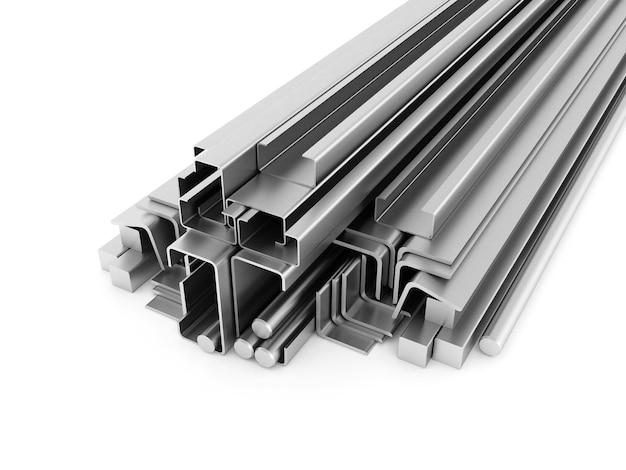Non-metals are typically known for their poor conductivity when it comes to heat and electricity. However, there is one exceptional non-metal that defies these expectations. In this blog post, we will explore which non-metal takes the crown as the best conductor of heat and electricity.
When discussing non-metal conductors, graphite often enters the conversation. Graphite is a form of carbon that is commonly used in pencils due to its ability to leave a mark on paper. While graphite is indeed a non-metal, it is surprising to learn that it boasts excellent conductivity. But how does it achieve this feat?
In this article, we will delve into the unique qualities of graphite and examine its electrical and thermal conductive properties. We will also explore other non-metal contenders and reveal which one emerges as the hardest non-metal in the world. So, let’s dive in and uncover the fascinating world of non-metal conductivity!

Non-Metal Conductors: Busting the Old Myths
When it comes to conducting heat and electricity, metals like copper and aluminum usually steal the spotlight. But what about non-metals? Can they compete in the conductivity game? Turns out, there’s one non-metal that deserves some serious recognition—an underdog that’s been long overlooked: graphite.
The Graphite Superstar
Graphite: the humble pencil lead material and the secret hero of non-metal conductors. Surprising, isn’t it? While it may not have the glamour of gold or the flashiness of silver, graphite possesses unique properties that make it an exceptional conductor of both heat and electricity.
Graphite’s Electric Sidekick
Before we delve into its impressive conductivity, we need to touch upon graphite’s atomic structure. Picture a stack of flat sheets, resembling a deck of cards. Each sheet is made up of millions of carbon atoms arranged in a honeycomb pattern. These layers are connected by weak forces, enabling them to easily slide past each other.
Now, here’s where the magic happens. In graphite, some electrons in the carbon atoms’ outer shells break free, creating delocalized electron clouds. These “wandering” electrons can move freely between the layers, allowing electricity to flow with minimal resistance. It’s like having a backstage pass to a concert—a smooth, VIP ride for electrons!
Heat Conduction in Graphite? Absolutely!
While graphite excels in electrical conductivity, it doesn’t skimp on heat conduction either. Remember those loosely bonded layers? Well, they play a crucial role in this aspect. When heat is applied to graphite, those thermal vibrations quickly spread through the layers, allowing the material to dissipate heat effectively.
Think of it as a never-ending game of “pass the potato”—the heat is the potato, and the carbon layers are the eager participants. As the heat travels from one layer to the next, it gets passed along until it eventually spreads throughout the entire graphite structure. This unique arrangement makes graphite an impressive contender in the non-metal conductivity arena.
The Graphene Connection
You may have heard of graphene—one of the most hyped materials in recent scientific history. Well, guess what? Graphene is essentially a single layer of graphite. Yup, that’s right. This ultra-thin, single-atom structure exhibits mind-blowing electrical conductivity, outperforming even the most renowned metals.
Graphene: Strong, Thin, and Electrically Supercharged!
Imagine a sheet of graphene as thin as a single carbon atom, yet stronger than steel. It’s like the superhero of materials! Thanks to its continuous hexagonal structure, graphene provides an ark of free electrons zooming at impressive speeds, ultimately leading to unparalleled electrical conductivity.
The exceptional conductivity of graphene has paved the way for countless potential applications, from ultrafast electronic devices to improved energy storage systems. Scientists are buzzing with excitement, and for a good reason—graphene has the potential to revolutionize multiple industries.
A New Era of Non-Metal Conductors
So, the next time someone tells you that only metals can conduct heat and electricity efficiently, you can confidently correct them. Graphite, with its graphite-y goodness, breaks the norm and proves that non-metals can indeed shine in the conductivity department.
Remember, it’s not always about the shiniest or most precious materials. Sometimes, the overlooked and underappreciated ones can surprise us with their hidden talents. Graphite and its superstar derivative, graphene, remind us to embrace the unexpected and to appreciate the unconventional champions of conductivity.

FAQ: Which Non-Metal is the Best Conductor of Heat and Electricity
Welcome to our FAQ section, where we tackle the burning questions about the best non-metal conductor of heat and electricity. We’ll dive into the properties of different non-metals and explore their conductivity in a fun and informative way. So, let’s get started!
Is Graphite a Poor Conductor of Heat
Ah, graphite! It’s not your average run-of-the-mill non-metal. In fact, graphite can be a bit of a rebel when it comes to conductivity. While most non-metals shy away from conducting heat, graphite boldly bucks the trend. It may surprise you to learn that graphite is actually an excellent conductor of heat. So, in answer to the question, nope, graphite is not a poor conductor of heat.
Which is the Hardest Non-Metal in the World
Now, we’re getting into some tough territory. If you’re thinking of something as hard as nails (or even harder), you may be surprised to find out that the answer lies in the mysterious realms of carbon! Yes, you guessed it – our good friend diamond takes the crown for the hardest non-metal in the world. Diamonds are not just a girl’s best friend, they’re also incredibly hard substances that can resist scratching and are excellent at transmitting energy. So, next time you wear that sparkling diamond ring, give it a little nod for being one tough non-metal!
What Does Graphite Contain that Makes it Conduct Heat
Ah, the secret behind graphite’s impressive heat conduction lies in its unique atomic structure. Picture a bunch of honeycomb-like sheets stacked on top of each other. Each of these sheets consists of carbon atoms arranged in a hexagonal lattice formation. This structure allows heat to transfer effortlessly through graphite. The carbon atoms in the lattice hold onto their heat energy with a firm grip, passing it along the sheets like a hot potato. So, thanks to its atomic acrobatics, graphite becomes a hotshot at conducting heat!
Ready to Conduct Some Knowledge
Now that we’ve answered your burning questions about non-metal conductivity, you’re armed with some electrically charged facts! Whether it’s graphite’s surprising heat conductivity or diamond’s unbeatable hardness, non-metals continue to astound us with their unique properties. So, the next time someone asks you which non-metal takes the prize for conducting heat and electricity, just remember that diamonds may be a girl’s best friend, but graphite is a heat conductor’s superstar!
Stay tuned for more insightful and electrifying articles from our blog. We’re here to spark your curiosity and enlighten your mind. Until next time!
*This content is for informational purposes only and does not constitute legal or professional advice.
